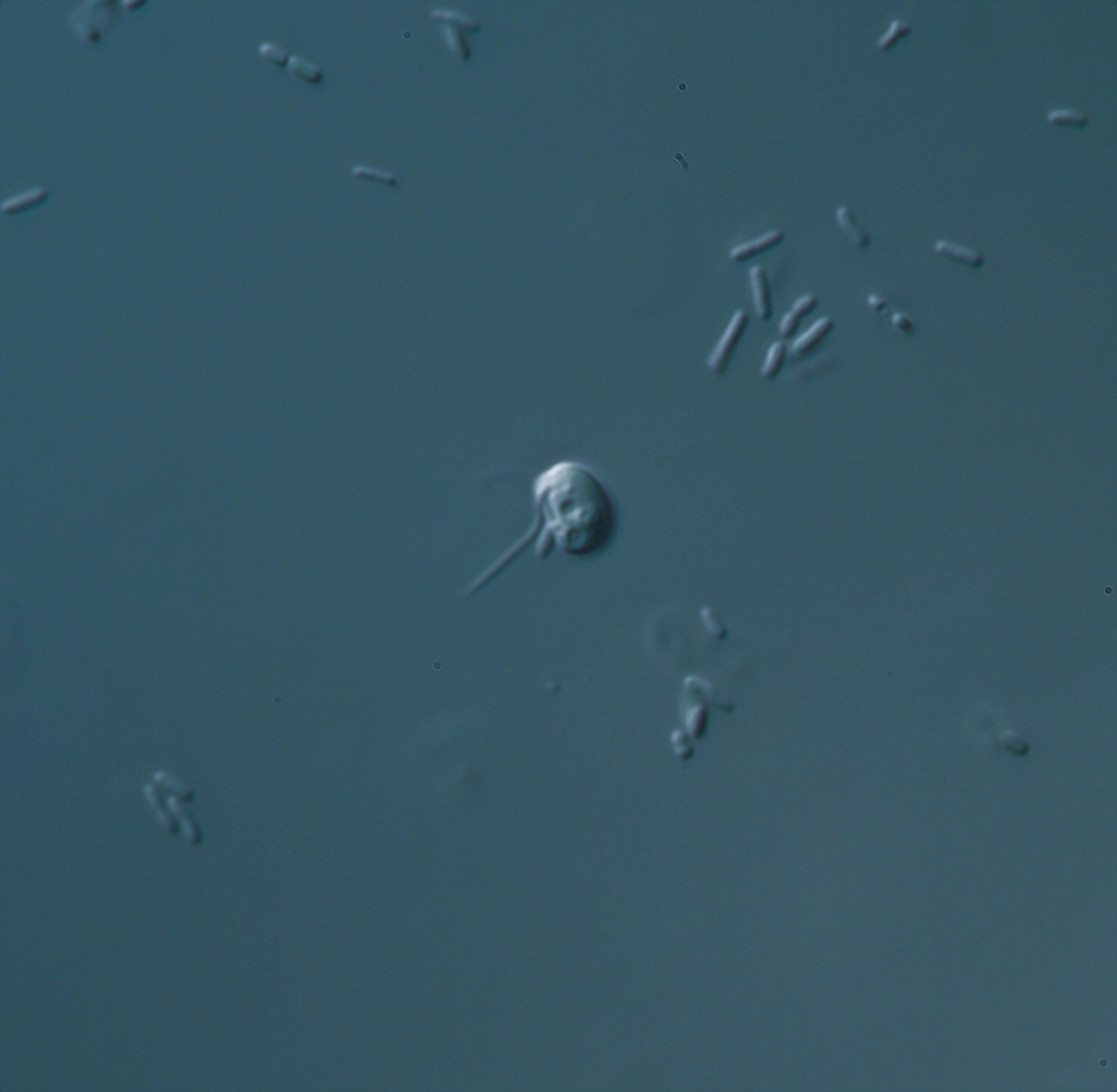Reviewed by Danielle Ellis, B.Sc.Jun 10 2022
DNA of 2 m length must fit inside a nucleus that is only eight millionths of a meter wide in practically every human cell. The severe space problem requires DNA to wrap around structural proteins called histones, much like wool around a spool. Chromatin is a coiled genetic architecture that protects DNA from harm and regulates gene expression.
 Ancyromonas sigmoides, an understudied microbe that holds enormous promise for investigations into the origin of eukaryote. Image Credit: Naoji Yubuki
Ancyromonas sigmoides, an understudied microbe that holds enormous promise for investigations into the origin of eukaryote. Image Credit: Naoji Yubuki
Histones can be found in both eukaryotes, which are living creatures with specialized cellular machinery like nuclei and microtubules, and archaea, which are single-celled bacteria that are prokaryotic, indicating they lack a nucleus.
Enzymes modify histones in eukaryotic cells, constantly altering the genomic landscape to regulate gene expression and other genomic functions. Despite its critical significance, the actual genesis of chromatin has remained a mystery.
Nature’s storage solution originally emerged in ancient microbes living on Earth around one and two billion years ago, according to researchers at the Center for Genomic Regulation (CRG). The findings were published in the journal Nature Ecology and Evolution.
The researchers utilized information written in modern organisms’ genomes to go back in time, grouping living forms based on the development of genes and proteins associated to chromatin. They looked at thirty distinct species found in Canadian and French water samples.
Modern gene-sequencing tools, which allow the identification of species by filtering DNA, were used to identify the bacteria. They were cultivated in the lab after that for proteome and genomic sequencing.
The researchers discovered that prokaryotes lack the machinery needed to change histones, implying that archaeal chromatin may have had a structural purpose but did not control the genome at the time.
Researchers discovered proteins that read, write, and delete histone modifications in early diverging eukaryotic lineages such as the malawimonad Gefionella okellyi, the ancyromonad Fabomonas tropica, and the discoban Naegleria gruberi, which had never been sampled before.
Our results underscore that the structural and regulatory roles of chromatin are as old as eukaryotes themselves. These functions are essential for eukaryotic life—since chromatin first appeared, it has never been lost again in any life form.”
Dr Xavier Grau-Bové, Study First Author and Post-doctoral Researcher, Center for Genomic Regulation
Dr Grau-Bové added, “We are now a bit closer to understanding its origin, thanks to the power of comparative analyses to uncover evolutionary events that occurred billions of years ago.”
The researchers used the sequencing data to rebuild the gene repertoire of the Last Eukaryotic Common Ancestor, the cell that gave rise to every eukaryote. This living creature possessed hundreds of histone-modifying genes and existed on Earth between one and two billion years ago, when it was thought to be between one and two billion years old.
According to the researchers, chromatin formed in this microorganism as a result of selective forces in Earth’s primordial environment.
Viruses and transposable elements are genome parasites that regularly attack DNA of single-celled organisms. This could have led to an evolutionary arms-race to protect the genome, resulting in the development of chromatin as a defensive mechanism in the cell that gave rise to all known eukaryotic life on Earth.”
Dr Arnau Sebe-Pedrós Study Senior Author and Researcher, Center for Genomic Regulation
Sebe-Pedrós further stated, “Later on, these mechanisms were co-opted into elaborate gene regulation, as we observed in modern eukaryotes, particularly multicellular organisms.”
Future research might delve into the evolution of histone-modifying enzymes in Asgardian archaea, which are microbes named after a legendary area inhabited by Norse gods and are commonly regarded as an evolutionary launching pad between archaea and eukaryotes, according to the study’s authors.
Certain Asgardian microorganisms, such as Lokiarchaeota, have histones with eukaryotic-like characteristics, which might be the product of convergent evolution, according to the researchers.
The research endeavor began eight years ago, and the study is the outcome of that work. The CRG-UPF Proteomics Unit, the Institut de Biologia Evolutiva (CSIC-UPF), Université Paris-Saclay, Université de Montreal, and the University of Vienna collaborated in the project, which was led by CRG experts.
Source:
Journal reference:
Grau-Bové, X., et al (2022) A phylogenetic and proteomic reconstruction of eukaryotic chromatin evolution. Nature Ecology & Evolution. doi:10.1038/s41559-022-01771-6